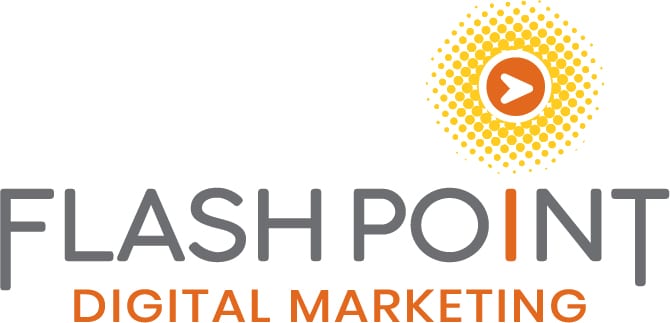SEO Guides, Tips & More!
Learn from Our Experience
Building a New Site? Consider this….
As the marketing director, you’ve just been given the approval to move forward with the task of redesigning your current website – score marketing department! This is an incredible and exciting opportunity to be part of creating solutions that can generate new business and revenue. A blank canvas has been given to you to develop with a design team. Before diving head first into this creative journey, take time to consider the complexities that are involved with the process including the importance of planning. Everyone has heard the expression “if you fail to plan, you plan to fail”. This couldn’t be truer when it comes to designing and developing a new website. Proceeding without a solid plan is like building a new house without architectural blueprints. Usually, the failure to plan happens because many do not realize that planning for the web is just as important as planning for anything else associated with their business. Having stated this, below are four important planning considerations to think about before embarking on the website journey.
- Identify Purpose and Goals – Seriously ask yourself what is the purpose of your website? Yes, I know you want a super cool look for the company’s site and a new design to match your brand…got it! However, I would like you to consider the business objective of the site. Is it to gain visibility for your business? To sell your products or services? To attract qualified talent and professionals to work at your organization? Perhaps something else. Whatever the purpose it’s important to establish the goals of the new site as early in the process as possible. Once you have the purpose defined, then you can start to identify the assets the site will need to successfully meet your needs. The purpose of these questions is to get you to think about and set measurable, specific goals for the new website that are in line with your marketing goals.
- Define Functionality – It’s essential to know how you expect the website to function. It’s a common mistake when building a custom website to just figure it out as you go. This is a recipe for disaster. Clearly, document and identify what type of functionality you expect to see on the site. Start by going section by section on the site and listing out what you want to have happen on each page. For example, on the blog do you want to have a list of related posts by category? What about a call to action? Knowing this before starting the engagement will help to ensure your project is a success.
- Establish a Budget – From small to mid-sized to large companies, you should always set a realistic website budget. Expenses include funding for web design, programming, SEO and web hosting (although it’s possible there could be additional expenses that may apply such as content development from a copywriter, etc.) Take your time and research the market by shopping around and consulting with professionals. Look at other websites to find out what you like and don’t like about the sites. (Note: we highly recommend looking outside your industry as sometimes a cool idea for a site has been done, but just not in your industry). This includes imagery and the way the site interacts with a user. Don’t fall into the trap of comparing quotes and securing the cheapest option, nor choosing the most expensive option either. A higher cost doesn’t always translate into a better product. All too often when the barest bones and cheapest option is selected to save money, such choices may cost you later with a less than well designed and functioning site that comes with lots of headaches. It’s wiser to choose professionals to partner with based on experience, insight, references, and examples of work.
- Get Organized – Once you’ve selected a team of individuals to work with, clearly assign roles including the following: internal decision makers, designer, developer/coder, SEO professional, content developer, and host company. Ensure that everyone on the team understands their roles and expectations. In the process, establish a realistic timeline for the delivery of designs, what the editing process is going to be, what it takes to get to final designs along with the amount of time required for content development, coding, and SEO implementation. It’s important to realize that building a website is a time-consuming process and cannot be forced or done at lightning speed. Well if it is done at a fevered pace, I can assure you it will not be the masterpiece you expected.
- Structure your Site – As you contemplate the new website, take time to consider what is necessary on the new site and what can get purged from the old site. What pages are required and what features and functionality are desired? Will new copy be written and provided, or should the existing copy migrate to the new site.
A few examples to think about include:
- What information is critical to the homepage?
- Do you want to use icons to represent areas of the site such as specific services or industries?
- Are there contact forms on each page?
- Will tracking software such as Marketo need to be embedded within pages?
- Is there a blog? If so, how far back does it date and how much of it is relevant to the new site?
- What are the blog categories and how should they be conveyed to your audience?
- Will blog posts need to appear in other sections of the website such as “Services”, “Industries”, “Bio Pages”, etc. How will they be filtered?
- Is there a staff directory? If so, how should it be broken down? By directors first and then managers, etc.?
- What contact info if any should be included on the directory?
- What content belongs to the individual bio pages? Will new bios be written and provided?
- Will a photo shoot be done to freshen up the professionals’ headshots?
The above list is enough to get one to begin thinking, but the list goes on and on and gets much deeper. A key point to remember is that professionals you partner with to build your new site can only quote on what they know factually about what a company needs during a redesign. It’s all the little requests and needs and functionality that are unspoken that create scope creep and facilitate unexpected surprises.
Practical Insights

“Looking back, I wish we had our site better locked up going in from a sitemap perspective, including child and sub child pages. Our company was experiencing some transition at the time, which resulted in more changes than I would have liked moving through the process. Also, I underestimated just how much time generating and updating content for the new site would take. As a writer, we love to procrastinate; this is something I wish I had stayed on top of from Day 1.”
Christian Moises, Marketing Director

“I think the following are important considerations: Begin with the end in mind – from aesthetic, functionally, experience, and how well it blends with your brand everywhere else it lives. End with the future in mind – make sure that what you have can be easily updated, added to, build out. Know your audiences – clients, prospective clients, employees, prospective employees, press – can they find everything they need to easily? Know your strategies to drive visitors and to convert them – and track the progress.”
Melissa Hornsby, Marketing Director

“First and foremost, be thoughtful about your scope and expectations. This sets the stage for the entire project – the more prepared and organized you are up front, the better the experience and end product. Choose a provider that will challenge you at the right times and think about what’s next, beyond your existing needs and list of “wants”. I also think it’s important to involve key stakeholders throughout the process (except maybe creative!). Oh, and have some fun along the way.”
Sara Robertson, Marketing Director
 “Don’t underestimate the undertaking, especially if you are looking to completely overhaul the website rather than just update it. From structuring the site in general to creating/revising content, it takes a lot of time, effort and tweaking. While it’s important to have a clear end-goal in mind, prepare to be flexible. Sometimes you have an amazing idea in your head that doesn’t translate to the website, and you’ll need to adjust it. You should stop at many points along the way and ask yourself – does this work? If not, change it!”
“Don’t underestimate the undertaking, especially if you are looking to completely overhaul the website rather than just update it. From structuring the site in general to creating/revising content, it takes a lot of time, effort and tweaking. While it’s important to have a clear end-goal in mind, prepare to be flexible. Sometimes you have an amazing idea in your head that doesn’t translate to the website, and you’ll need to adjust it. You should stop at many points along the way and ask yourself – does this work? If not, change it!”

“Don’t think of the project as “one and done.” Consider your website to be a living, breathing thing. This will allow you to think outside the box through the process. Consider the elements that are “must haves” and focus on those first. Once the site is functioning well, you can add, change and remove items that didn’t turn out the way you anticipated. This also removes some of the stress people feel when officially launching a new site. CMS sites are so easy to manage now, it doesn’t make sense to wait on small edits or to have it 100% perfect—you can change most of the little things (verbiage, extra content, etc.) later on your own. ”
Stephanie Chapa, Director of Marketing
 “Important to consider when building a website, especially if you have limited resources in terms of funding and manpower, are the key components of functionality that are most important to your organization. In a recent overhaul to our website, what was most important was the CMS—its ease of use and the ability to easily add additional features at a future date. The CMS determines your ability to organize information on the site and having flexibility within the tool was at the top of our list of priorities. Planning, planning and more planning is also at the top of the list as you want to ensure the best decisions are made with allocated funds.”
“Important to consider when building a website, especially if you have limited resources in terms of funding and manpower, are the key components of functionality that are most important to your organization. In a recent overhaul to our website, what was most important was the CMS—its ease of use and the ability to easily add additional features at a future date. The CMS determines your ability to organize information on the site and having flexibility within the tool was at the top of our list of priorities. Planning, planning and more planning is also at the top of the list as you want to ensure the best decisions are made with allocated funds.”
Jennifer Maziel, Communications Manager

“As with any major project, you must keep your expectations realistic, especially with regard to timing and overall scope. Website progress can easily get derailed by personal (and conflicting) opinions or trying to focus too much at once in the process. Consider breaking the project into two phases: pre- and post-launch. From there, determine which items need to be completed fully before unveiling the site, and which can continue to evolve thereafter. Your website will always be a work in progress, so don’t worry yourself over getting every aspect completed before your site goes live!”
Jayme Terrell – Marketing Manager

“Rebranding a website is a huge undertaking, but an exciting opportunity to restructure the way your organization manages client experience and communicates valuable information. Aside from the great recommendations made above, I recommend beginning your planning with a brainstorm session that includes key individuals such as IT for security of the website, sales for their messaging perspective, and service delivery for content development to discuss and align key objectives and goals of the website, while also creating a laundry list of all tools that will need to be integrated into the site ie: CRM, marketing automation, digital applications, security tools, etc. This collaboration will help create a seamless and efficient development of your website done correctly the first go around!”
Veronica Malloy, Director of Marketing

“My biggest takeaways from building our new website is to approach the entire prospect from the client’s perspective. Rather than using your website to showcase all of the deeply technical things your firm can do, simplify and address pain points that your clients are experiencing. Use words that they would use rather than complicated technical terms. Position yourself as an expert, but more as a guide who can help your client be the hero. Simple is better.”
Emily Taibl, Marketing Manager
 “It is really important to understand the timeframe of website development and stay on top of your provider for a revised timeline every other week or so. Things can take longer than expected and you have to be mindful of timing when going through a website rehaul. It helps to manage expectations within the firm. Fortunately for me, our content development stage happened when our practitioners were not as busy and could provide feedback in a timely manner.”
“It is really important to understand the timeframe of website development and stay on top of your provider for a revised timeline every other week or so. Things can take longer than expected and you have to be mindful of timing when going through a website rehaul. It helps to manage expectations within the firm. Fortunately for me, our content development stage happened when our practitioners were not as busy and could provide feedback in a timely manner.”
Katelyn Stewart, Director of Practice Growth
Are You Scared?
A website redesign is a major event, so it makes sense that the planning process should also be taken seriously. Remember to ask a lot of questions during the planning process and take time to conduct research to help you arrive at what you want and need in order to solidify your plan. Finally, enjoy the process and have fun. After all, it is a creative endeavor.
What did we miss? What have you learned or experienced?

